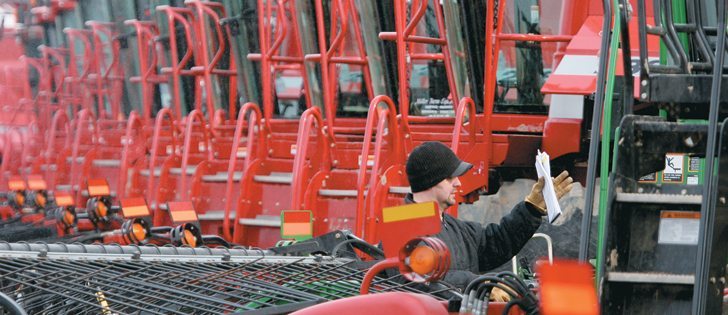Equipment purchases | Survey gathers differences in equipment expectations of crop and livestock producers
Grain and cattle producers are like chalk and cheese when it comes to farm equipment.
Livestock producers look for equipment that is easy to maintain and will last a long time, while grain producers rank reliability high on their list, said a Case IH survey of 800 American and Canadian farmers.
“We’re a different breed,” said Elgar Grinde, a livestock producer from Holden, Alta.
Angela Semeniuk, a grain farmer from Smoky Lake, Alta., said their combine and seeding equipment may run for only one month a year, but they don’t want to worry about breakdowns during the busy seasons.
Read Also

New coal mine proposal met with old concerns
A smaller version of the previously rejected Grassy Mountain coal mine project in Crowsnest Pass is back on the table, and the Livingstone Landowners Group continues to voice concerns about the environmental risks.
“It has to be able to work when you want it to,” she said.
To help ensure reliability, Semeniuk said the farm never keeps combines longer than five years and usually trades them in for a new model when they are only three years old.
“For us, we need to know when we turn it on, it has to go,” she said.
“Combines are a lot of money for only being used one month.”
The farm keeps its sprayer longer but buys new when it comes time to replace it to ensure it has the latest technology.
The survey also found that grain producers emphasize high resale value and innovative and progressive manufacturers.
Semeniuk believes resale value is more a function of hours and maintenance. All their equipment is kept under shelter to slow the machinery value’s drop in value.
“It’s how you take care of it that gives you your resale value.”
Semeniuk said each piece of equipment, including their four tractors, have different uses. Their oldest tractor is attached to the grain vacuum, the grain bagger or an auger.
“It plays an important role, but the hours put on it are sporadic. Our four wheel drive will go for 16 hours a day for a full month.”
She said a livestock producer’s tractor may operate for only one hour a day.
“Livestock versus crops are two different worlds. It’s hard to compare the two.”
Grinde said it comes down to price and return on investment for livestock producers, who have struggled through years of low prices.
“The average livestock producer cannot afford new equipment and has restricted the purchase of new equipment just to stay in business. The depreciation on new equipment on most livestock operations comes up with a negative return on investment,” he said.
“While grain farmers, having had more capital to work with, have been able to justify the added expense by the increased size and efficiencies in technology found on new equipment, giving them a positive ROI.… The grain producers have an iron addiction. They like iron. Us livestock producers don’t tend to put a lot of value on equipment and tend to not buy a lot.”
He said grain producers are continually upgrading their equipment to have the latest gadgets to chase the last bushel of production. Livestock producers haven’t seen the same dramatic changes in technology, he added.
Grinde said mowers haven’t changed much in 30 years, except get bigger. Balers are basically the same machine but with stronger parts and bigger belts. A front end loader is still a front end loader.
“It’s still the same machinery, but upgraded a little bit,” said Grinde, who tries to use his equipment as little as possible to help reduce the cost of raising livestock on his cow-calf operation.
“The livestock producers don’t need the electric bells and whistles and GPS and variable rate gadgets. GPS doesn’t matter on a baler unless you want your bales all in a row,” he said.
“Grain guys want bigger equipment, but you can’t make bales any bigger.”
He said he would rather have two older pieces of equipment rather than a newer one in case of a breakdown during the important haying season.
Livestock producers also told the survey that ease of maintenance is a high priority.

















